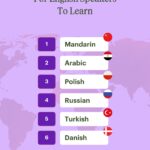Are you eager to know How Long Does It Take To Fluently Learn Spanish? At LEARNS.EDU.VN, we understand your curiosity and offer a clear roadmap to achieve Spanish fluency, typically within 9–12 months with the right strategies and consistent effort, focusing on active learning and immersion techniques. This journey involves mastering conversational skills, understanding cultural nuances, and utilizing effective resources, paving the way for confident communication in Spanish.
1. Understanding Spanish Fluency: What Does It Really Mean?
Fluency in Spanish goes beyond simply understanding words and constructing grammatically correct sentences. Conversational fluency means engaging in natural conversations with native speakers, sharing stories with emotion, cracking jokes, and discussing various topics effortlessly. It’s about feeling comfortable and confident while expressing yourself in Spanish.
Achieving this level of fluency is entirely possible with dedication and effective learning strategies. Your progress will depend on:
- Prior Language Experience: Your background in learning other languages can significantly impact your ability to pick up Spanish.
- Intensity of Effort: The amount of time you dedicate to active Spanish usage each day or week.
- Learning Methods: Some methods, such as immersion and interactive practice, are more effective than others.
- Available Resources: Access to technology, language partners, travel opportunities, and quality learning materials.
 Spanish Classroom Setting
Spanish Classroom Setting
2. Realistic Timelines: How Long to Learn Spanish Fluently?
Forget about promises of fluency in days or weeks; those are unrealistic. Here’s a more realistic breakdown based on the Common European Framework of Reference for Languages (CEFR):
- A1 Level (Beginner): 70-80 hours
- A2 Level (Elementary): 150-180 hours
- B1 Level (Intermediate): 300-360 hours
- B2 Level (Upper-Intermediate): 540-620 hours
The CEFR suggests that conversational fluency emerges at the B2 level, requiring 540-620 hours of focused practice, achievable in 12-24 months with consistent effort. While the U.S. Foreign Service Institute (FSI) estimates 600+ classroom hours, this can often be an overestimate due to passive learning methods.
Actively engaging with the language—speaking, interacting, and immersing yourself—can significantly reduce the time needed. Consider practicing regularly with a private tutor or language exchange partner to accelerate your progress. At LEARNS.EDU.VN, we emphasize balancing intensive, active practice with consistent daily habits for optimal results.
3. Months 1–3: Building a Survival Vocabulary
Your first three months should focus on building a survival vocabulary. Think of this phase as collecting the essential building blocks for constructing sentences. Prioritize high-frequency and high-utility words and phrases, such as:
| Category | Examples |
|---|---|
| Greetings | ¡Hola! ¡Buenos días! ¡Buenas tardes! |
| Family Words | Madre, padre, hermano, amigos |
| Directions | Aquí, allí, a la derecha, al frente |
| Transactions | ¿Cuánto cuesta? ¡Gracias! De nada. |
Avoid getting bogged down with complex grammar concepts at this stage. Instead, concentrate on learning and using common vocabulary, which will help you make rapid progress. Resources like LEARNS.EDU.VN’s vocabulary flashcards can be invaluable.
Immerse yourself in real-world conversations. Listen attentively, pick out individual words you recognize, and try to mimic native speakers to develop excellent pronunciation from the start. By the end of three months, you should be able to have short, simple dialogues about basic personal details and navigate essential tasks like ordering meals.
4. Months 4-6: Consolidating Progress and Choosing Your Path
This phase involves solidifying your progress and building upon your existing knowledge. Students typically choose between two approaches during months 4-6:
- Systematic Grammar Study: Focus on learning the fundamentals of Spanish grammar in a structured manner.
- Comprehensible Input: Learn through listening and reading content that is challenging yet understandable.
Comprehensible input involves engaging with content that’s just difficult enough to challenge you while still being somewhat understandable. This approach, popularized by Dr. Stephen Krashen, suggests that input should be the primary focus. You’ll naturally pick up grammar and vocabulary through authentic content.
Activities include listening to podcasts, watching videos with transcripts, and using flashcards to reinforce new vocabulary. Platforms like LEARNS.EDU.VN offer AI-powered language partners that can provide interactive practice anytime.
Regardless of your approach, by month six, you should be able to describe your family, discuss daily routines, understand questions about your studies and work, and express simple opinions or needs. Appreciate how far you’ve come and have patience with your limitations.
5. Months 7–11: Immersing Yourself in Spanish Language and Culture
After about six months of consistent study, immerse yourself more fully in Spanish language and culture. The most impactful step is spending 1-3 months in a Spanish-speaking country. This may not be feasible for everyone, but the more time you can spend around native speakers, the better.
Listen closely for patterns by conversing with native speakers daily. Absorb vocabulary from real Spanish media, such as TV shows, music, and even cafe menus. Avoid translating directly; try to grasp meanings from context and actions. Remember, making mistakes is a sign of courage and active learning.
Immersion can lead to significant improvements in your spoken abilities and comprehension, forming new neural pathways that allow you to process Spanish words more easily.
6. Month 12: Overcoming the Intermediate Plateau
Many students encounter the “intermediate plateau” after making rapid initial progress. Characteristics of this stage include:
- Difficulty maintaining fluid conversations at native speed
- Trouble understanding native speakers and media
- Loss of motivation due to lack of visible progress
- Repeatedly making basic mistakes
It’s common to feel overwhelmed by the complexity of the language and frustrated by recurring errors. However, this stage is temporary and can be overcome with persistence. Tips to push through this obstacle include:
- Consistency: Maintain daily study habits, even if it’s just for 15 minutes.
- Diversification: Combine tutoring with reading, podcasts, and videos.
- Patience: Remind yourself that language learning is a marathon, not a sprint.
With effective strategies and consistency, you can power through the intermediate plateau and unlock accelerated gains.
Alt: Graph illustrating language learning progress over time, showing an initial rapid increase followed by a plateau and then further progress.
7. The Role of Active Learning in Spanish Fluency
Active learning is a cornerstone of effective language acquisition. Research indicates that actively engaging with the language through speaking and real-time interaction significantly enhances retention and fluency compared to passive methods like lectures. A study from the journal Psychological Science highlights the importance of balancing speaking and listening to optimize language learning outcomes.
Active learning includes activities such as:
- Conversation Practice: Regular sessions with native speakers or tutors.
- Interactive Exercises: Engaging in activities that require you to actively use the language.
- Role-Playing: Simulating real-life scenarios to practice conversational skills.
- Immersion: Surrounding yourself with the language and culture.
8. Leveraging Technology for Spanish Learning
Technology provides numerous tools and resources to enhance your Spanish learning journey. Mobile apps, online platforms, and AI-driven language partners can provide personalized and interactive learning experiences. Some examples include:
| Technology | Description |
|---|---|
| Language Learning Apps | Apps like Duolingo, Babbel, and Memrise offer gamified lessons and interactive exercises to build vocabulary and grammar. |
| Online Platforms | Platforms such as LEARNS.EDU.VN provide access to tutors, courses, and resources tailored to your learning needs. |
| AI Language Partners | AI-driven chatbots and virtual tutors offer opportunities for real-time conversation practice and feedback. |
9. Setting Achievable Goals for Spanish Learning
Setting realistic and achievable goals is crucial for staying motivated and tracking your progress. Break down your language learning journey into smaller, manageable steps. Examples of achievable goals include:
- Weekly Vocabulary Quotas: Learn and memorize a set number of new words each week.
- Conversation Milestones: Aim to hold a 5-minute conversation in Spanish each day.
- Grammar Targets: Master a specific grammar concept each week.
- Cultural Immersion: Watch a Spanish movie or listen to a Spanish podcast each week.
Regularly review your progress and adjust your goals as needed to stay on track.
10. The Importance of Cultural Immersion in Fluency
Cultural immersion enhances language skills and provides a deeper understanding of the Spanish-speaking world. Engaging with cultural aspects such as music, movies, literature, and cuisine can enrich your learning experience and increase your motivation.
Strategies for cultural immersion include:
- Traveling to Spanish-Speaking Countries: Immersing yourself in the language and culture firsthand.
- Attending Cultural Events: Participating in festivals, concerts, and other cultural activities.
- Engaging with Spanish Media: Watching Spanish movies and TV shows, listening to Spanish music, and reading Spanish books.
- Connecting with Native Speakers: Interacting with native speakers to learn about their customs and traditions.
11. Maintaining Motivation Throughout Your Spanish Learning Journey
Maintaining motivation is essential for long-term success. Here are strategies to stay engaged and inspired:
- Find a Language Partner: Learning with a friend or language exchange partner can provide support and accountability.
- Join a Language Community: Connect with other learners to share experiences and tips.
- Set Realistic Goals: Avoid overwhelming yourself with unrealistic expectations.
- Celebrate Your Progress: Acknowledge and reward yourself for achieving milestones.
- Make It Fun: Incorporate enjoyable activities into your learning routine, such as watching movies, listening to music, or cooking Spanish dishes.
12. Common Mistakes to Avoid When Learning Spanish
Avoiding common mistakes can streamline your learning process. Some frequent pitfalls include:
- Neglecting Pronunciation: Neglecting proper pronunciation early on can lead to bad habits.
- Relying Too Much on Translation: Over-reliance on translation can hinder your ability to think in Spanish.
- Ignoring Cultural Context: Understanding the cultural context is crucial for effective communication.
- Avoiding Speaking Practice: Lack of speaking practice can limit your fluency development.
- Being Afraid of Making Mistakes: Embrace mistakes as a natural part of the learning process.
13. Personalized Learning Paths with LEARNS.EDU.VN
LEARNS.EDU.VN offers personalized learning paths tailored to your individual needs and goals. Our platform provides:
- Customized Learning Plans: Tailored to your specific learning style and objectives.
- Access to Experienced Tutors: Connect with qualified Spanish tutors for personalized instruction.
- Interactive Lessons and Exercises: Engage with dynamic content that keeps you motivated.
- AI-Driven Language Partners: Practice your conversational skills anytime with our AI-powered virtual tutors.
- Resources and Tools: Access a wide range of resources, including flashcards, videos, and podcasts.
14. Tips for Accelerating Your Spanish Learning
Accelerate your Spanish learning with these proven techniques:
- Spaced Repetition: Review vocabulary at increasing intervals to reinforce memory.
- Active Recall: Test yourself regularly to strengthen your retention.
- Interleaving: Mix different types of learning activities to improve comprehension.
- Contextual Learning: Learn new words and phrases in context to understand their usage.
- Immersion Techniques: Surround yourself with the language as much as possible.
15. The Long-Term Benefits of Learning Spanish
Learning Spanish offers numerous long-term benefits, including:
- Enhanced Cognitive Abilities: Studies show that learning a new language can improve memory, problem-solving skills, and multitasking abilities.
- Career Opportunities: Fluency in Spanish can open doors to new career opportunities in fields such as translation, education, international business, and tourism.
- Cultural Enrichment: Gain a deeper appreciation for Spanish-speaking cultures and traditions.
- Travel Opportunities: Travel more confidently and connect with locals in Spanish-speaking countries.
- Personal Growth: Expand your horizons and gain a new perspective on the world.
16. Resources Available at LEARNS.EDU.VN
LEARNS.EDU.VN offers a comprehensive range of resources to support your Spanish learning journey:
| Resource | Description |
|---|---|
| Online Courses | Structured courses designed to take you from beginner to fluent. |
| Personalized Tutoring | Connect with experienced Spanish tutors for one-on-one instruction and feedback. |
| Vocabulary Flashcards | Interactive flashcards to help you learn and memorize new words and phrases. |
| Grammar Guides | Comprehensive guides to help you understand Spanish grammar rules and concepts. |
| Audio and Video Lessons | Engaging audio and video lessons to improve your listening comprehension and pronunciation. |
| AI Language Partner | Practice your conversational skills anytime with our AI-powered virtual tutor. |
| Cultural Resources | Access to music, movies, books, and other cultural materials to enhance your learning experience. |
| Community Forums | Connect with other learners to share experiences, ask questions, and find support. |
17. How LEARNS.EDU.VN Supports Your Spanish Learning Goals
At LEARNS.EDU.VN, we are dedicated to helping you achieve your Spanish learning goals. Our approach combines:
- Personalized Learning Paths: Customized learning plans based on your individual needs and objectives.
- Expert Instruction: Access to experienced Spanish tutors and language professionals.
- Engaging Content: Dynamic and interactive lessons that keep you motivated.
- Advanced Technology: AI-powered language partners and innovative learning tools.
- Supportive Community: A vibrant community of learners to share experiences and find encouragement.
18. Proven Methods for Spanish Language Mastery
Mastering Spanish requires a combination of effective methods. Here are some proven techniques to accelerate your progress:
- Immersion: Fully immerse yourself in the Spanish language and culture.
- Active Learning: Engage actively in speaking, writing, and interactive exercises.
- Consistent Practice: Dedicate time to practice Spanish every day.
- Personalized Learning: Tailor your learning to your individual needs and preferences.
- Utilize Technology: Leverage language learning apps, online resources, and AI-driven tools.
19. Maintaining Consistency in Your Spanish Studies
Consistency is key to achieving fluency in Spanish. Here are tips for maintaining a consistent study routine:
- Set a Schedule: Dedicate a specific time each day or week to study Spanish.
- Create a Study Space: Designate a quiet and comfortable space for studying.
- Use a Planner: Track your progress and stay organized with a study planner.
- Find a Study Buddy: Learning with a friend can provide motivation and accountability.
- Reward Yourself: Celebrate your achievements to stay motivated.
20. Staying Motivated: Real Success Stories
Inspiration from real success stories can fuel your motivation. Consider these examples:
- Maria: A busy professional who achieved fluency in Spanish through consistent daily practice using the LEARNS.EDU.VN app.
- Carlos: A student who improved his Spanish proficiency by attending online tutoring sessions and engaging with cultural resources.
- Sofia: A retiree who fulfilled her dream of traveling to Spain by learning Spanish through immersion techniques and personalized lessons.
These success stories demonstrate that anyone can achieve fluency in Spanish with the right strategies and dedication.
FAQ: Frequently Asked Questions About Learning Spanish
1. How long does it take to learn basic Spanish?
You can learn basic Spanish in about 3-6 months with consistent study, focusing on essential vocabulary and grammar.
2. Is Spanish hard to learn for English speakers?
Spanish is considered relatively easy for English speakers due to similarities in vocabulary and sentence structure.
3. What is the fastest way to become fluent in Spanish?
Immersion, consistent practice, and personalized learning strategies are the fastest ways to achieve fluency.
4. How many hours a day should I study Spanish?
Aim for at least 1-2 hours of focused study each day for optimal progress.
5. What are the best resources for learning Spanish?
Language learning apps, online courses, tutoring, and cultural resources are all valuable tools.
6. Can I become fluent in Spanish online?
Yes, online resources and tutoring can effectively help you achieve fluency.
7. What level of Spanish is considered fluent?
A B2 level on the CEFR scale is generally considered fluent.
8. How can I improve my Spanish pronunciation?
Practice with native speakers, use pronunciation guides, and record yourself speaking.
9. What are the most common mistakes Spanish learners make?
Neglecting pronunciation, relying on translation, and avoiding speaking practice are common mistakes.
10. How do I stay motivated while learning Spanish?
Set realistic goals, find a language partner, and celebrate your progress to stay motivated.
Learning Spanish is a rewarding journey that opens up new opportunities and experiences. With the right approach, dedication, and resources, you can achieve fluency and enjoy the many benefits of knowing this beautiful language. Visit learns.edu.vn to explore our courses, resources, and personalized learning paths designed to help you succeed. Contact us at 123 Education Way, Learnville, CA 90210, United States, or WhatsApp at +1 555-555-1212. Let’s embark on this exciting adventure together!

